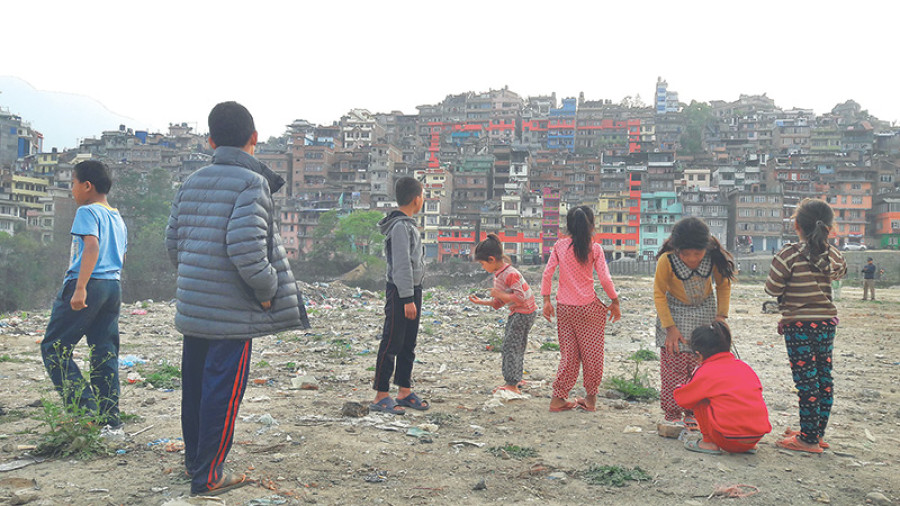Entertainment
Kirtipur as canvas
Often a work of genius is also a work of hubris. That said, a work of hubris, doesn’t necessarily make one a work of genius.
Timothy Aryal
Often a work of genius is also a work of hubris. That said, a work of hubris, doesn’t necessarily make one a work of genius. Take for instance, artist Amrit Karki’s work, Rectangle, currently on view in the historic citadel of Kirtipur, as part of the ongoing Kathmandu Triennale. Minimal in form, the work is a giant mural that connects a total of 21 houses in Kirtipur’s Nayabazaar, with a single thread of red paint.
The settlement of Nayabazaar, as it is, is a sight to behold. The houses are constructed in such a way that when you look at them all, sprouting hither thither on the hill, you’d be forgiven for thinking that they were the hundreds of houses making for an organic whole and not separate entities.
The structure had enthused artist Karki, since he first visited the area, some four years ago. “As I first glanced at the neighbourhood, it suddenly looked to me as if it was a giant canvas—I was drawn by the colours, various layers and its structure,” the artist said. “Since then, I had been toying with an idea in the back of my mind that one day I will make a painting with Nayabazaar as a canvas. And I worked at it, aiming to make it a part of the Triennale.”
For a majority of Kirtipur’s residents, Karki’s idea didn’t make much sense in the beginning. For the artist, it took long and hard to convince the locals; some agreed, while some outright rejected the idea, perhaps deeming it a work of hubris and nothing else.
Almost two months in the making, where the artist teamed up with two architects and scores of volunteers, the work is now ready and garnening widespread attention, inviting diverse interpretations. The work is the largest body of work at the ongoing art fest.
Karki is a recent graduate from Kathmandu University School of Arts. His last exhibit, titled Persistence, revolved around motifs of self and the art of perception, and had a slightly surrealistic tinge to it. But the present work, the artist says, is not bound by any particular motif or theme.
But what is the inspiration behind this simple but grand piece of work?
“It basically sums up the many impressions I come across as I travel the city. Rectangle is the culmination of my recollections about the city as I have felt them. And I tried to condense those feelings into this large, but minimal, work,” says the artist. “My works are basically the idea and needs not necessarily be functional.”




 10.12°C Kathmandu
10.12°C Kathmandu










